Gemini Tinytag Data Loggers
Robust Environmental Monitoring Solutions.
Tinytag data loggers Accurately and Reliably Monitor and Record Temperature, Humidity, Power usage, CO2 Voltage, Current and other environmental parameters. Tinytags include compact units for indoor use and rugged devices for industrial and outdoor applications.
Guided Navigation Tip:
The Gemini Tinytag product lineup is listed below with brief descriptions, for further detailed information click on any of the images or links below or you can refine your search using the filter on the left of this page.
| FOOD | STORAGE | SHIPPING-TRANSPORT | ||
 |
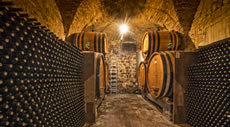 |
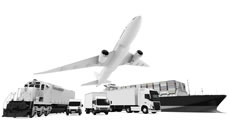 |
||
| Data loggers ideal for measuring, recording, and wirelessly transmitting data during cooking, shipping and storage of food products | Monitoring the environmental parameters of various storage units including wine cellars, freezers, refrigerators and warehouses. | Shipping data loggers for monitoring and recording shock, temperature and humidity during transportation. | ||
| ENVIRONMENTAL MONITORING | VACCINE-COLD CHAIN | PHARMACEUTICAL | ||
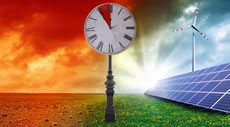 |
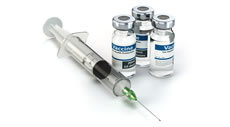 |
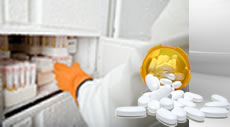 |
||
| Data loggers for measuring wind speed, temperature, humidity, pH, rainfall, soil moisture, barometric pressure and UV over time. | Common medical applications for data loggers include vaccine monitoring, cold chain, lyophilization and laboratory monitoring. | Monitor and record critical parameters during the manufacturing, shipping and storage of pharmaceuticals. | ||
| MUSEUM-ART PRESERVATION | MANUFACTURING | FACILITY MAINTENANCE | ||
 |
 |
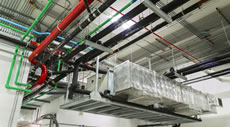 |
||
| Data loggers to monitor and record temperature, humidity and shock levels for art preservation and during storage, transport or while on display. | Data loggers designed to be used in manufacturing applications, including equipment monitoring, machinery troubleshooting, counting/totalizing and event recording. | Versatile data logging tools to ensure building structurally safety, indoor air quality and the monitoring HVAC systems. flexible units may be used for short periods to trouble-shoot conditions in a particular area, or for longer periods in multiple locations to build up profiles. |
Technical Support Documents for our products are available in Adobe PDF file format.
A free copy of Adobe PDF Reader can be downloaded direct from Adobe by Clicking Here.
Tinytag Software Data Sheets.
Calibration Options
Time of Purchase:
When you are making your initial purchase of our data loggers you can add a Calibration Certificate to your Cart.
Several Calibration options are available with each showing its associated cost.
Service Calibration:
What is included in the Calibration Service?
Service Calibration includes calibration of your data logger against an instrument of known accuracy, battery replacement and a Certificate confirming your Data logger's Accuracy at the time of measuring.
When a data logger is sent for service calibration, readings from at least two specified points across the data logger's measurement range are cross-referenced with a meter that has been calibrated in a N.I.S.T. National Institiute of Standards and Testing or a UKAS (United Kingdom Accreditation Service) laboratory. This means that calibrations are traceable to National Standards.
A calibration certificate is provided at the end of the service to confirm what the logger was found to be reading. Details provided on the calibration certificate include:
- the readings of both the data logger and the reference meter
- the margin of error between the data logger and reference meter
- the serial number of the data logger which was tested.
- the test method
- the equipment used
- the date of the calibration
- readings from before and after adjustments have been made to a logger (where appropriate)
As part of the service, batteries and any seals or desiccant packs are replaced.
The calibration service for relative humidity data loggers includes an adjustment to the data logger itself when possible, where the relative humidity sensor is adjusted to remove reading errors from the loggers.
If an adjustment is not possible then and As is / As Found Reading will be Recorded.
The calibration certificate will show the readings taken both before and after the adjustment is made to relative humidity loggers.
Adjustments to other data loggers are not usually made unless specified by the user or the laboratory.
We recommend that data loggers are calibrated at least once a year to ensure that they continue to meet the specification stated on their data sheet. Data loggers used in critical or high accuracy applications may need more regular checks.
Standard calibration points
Our standard calibration points reflect the conditions experienced in most common applications.
Temperature and Relative Humidity Loggers
Temperature: 0 and 30°C
Humidity: 20 and 80 % RH (at 25°C)
If you require Calibration at Other Points, we can calibrate units within the following ranges (where appropriate):
Temperature: -30 to +135 °C
Humidity: 20 to 90 % RH (at 25°C)
CO2 Loggers
0 to 2000ppm units: 500, 1000 and 1500ppm
0 to 5000ppm units: 500, 2,500 and 4000ppm
Voltage and Current Loggers
Please contact us to discuss your requirements for voltage and current loggers.
Our standard points are:
0 to 2.5V loggers: 500mV and 2,000mV
0 to 25V loggers: 5 and 20V
0 to 20mA loggers: 8 and 16mA
Choosing custom calibration points
If our standard points do not meet the requirements of your application, you can choose custom calibration points for your data logger to be checked at.
The points you select should reflect the conditions that your data logger regularly monitors.
At least two points across a measurement range should be chosen.
For example:
A temperature data logger used in a clinical fridge needs to accurately record fridge temperatures. Two calibration points of +2°C and +8°C would reflect the conditions that the data logger is required to measure.
It is not recommended to calibrate at the extremes of a data logger's measuring range as accuracy can decrease in these areas, and any adjustments made based on these measurements could affect how the logger reads at other points.
